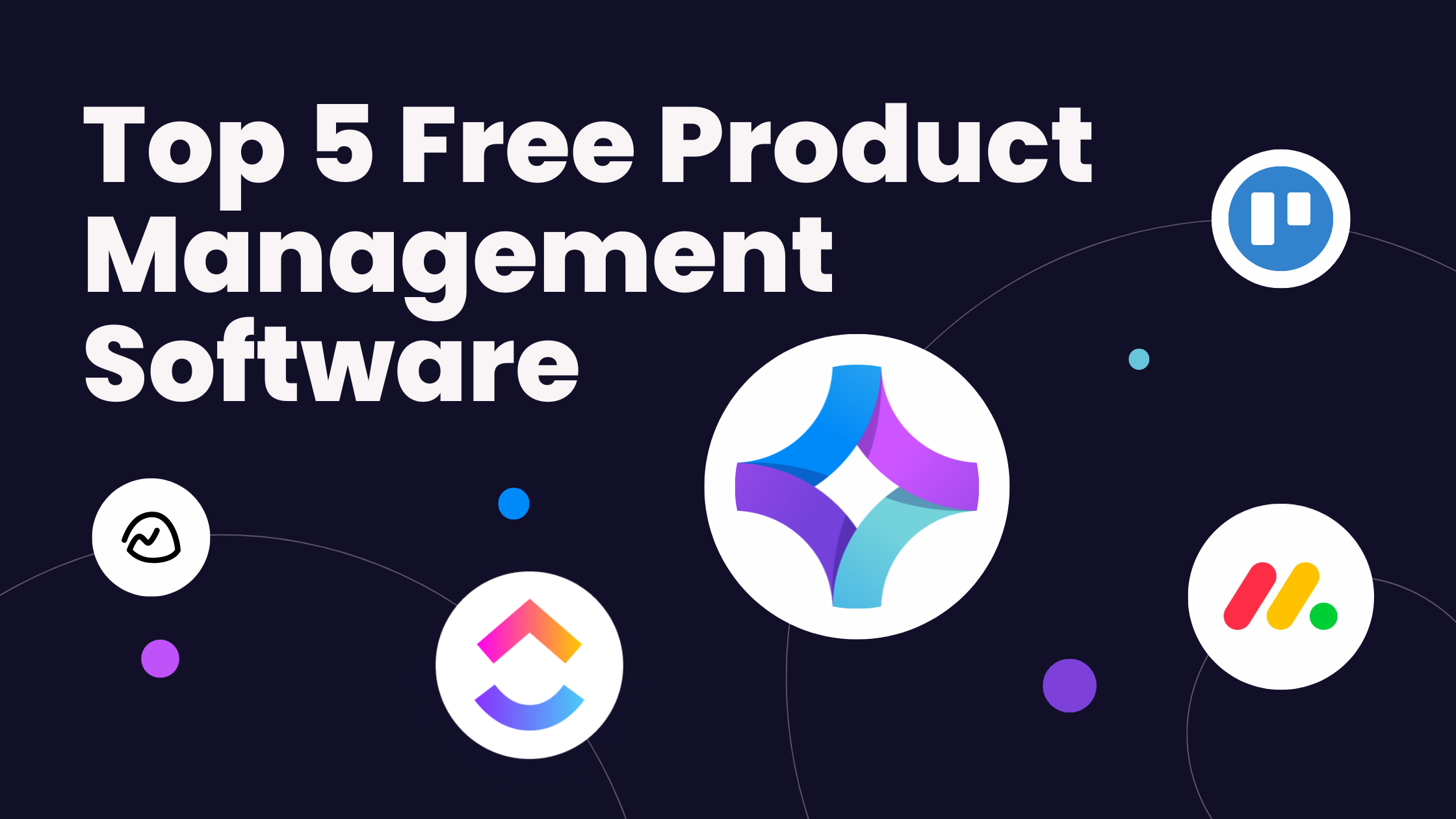In today’s fast-paced business environment, efficient project management is crucial for success. Product management software has become indispensable for startups, small businesses, and large enterprises alike, offering a range of features that streamline processes, enhance collaboration, and boost productivity. The availability of free product management tools is a boon for smaller teams and startups that need robust solutions without breaking the bank. This article delves into the top five free product management software in 2024, focusing on their unique features, benefits, and how they fit into the product management process.
Table of Contents
Criteria for Selecting the Best Free Product Management Tools
When selecting the best free product management tools, several key criteria should be considered:
- Features and Functionality: The software should offer a comprehensive set of tools that cover various aspects of project management, including task management, collaboration, communication, and reporting.
- User Interface and Experience: A user-friendly interface and intuitive experience are essential for minimizing the learning curve and ensuring team adoption.
- Integration Capabilities: The ability to integrate with other tools and platforms is crucial for a seamless workflow.
- Scalability and Flexibility: The software should be able to scale with your business and offer flexibility in terms of customization and usage.
- Customer Support and Community: Access to reliable customer support and an active community can greatly enhance the user experience.
Teamplate
Teamplate is a user-friendly, all-in-one collaboration tool designed to manage the various communication and project management elements required for running a smaller-scale company. Built to compete against established tools like Slack, Zoom, Jira, and Confluence, Teamplate combines the functionalities of these platforms into one cohesive system, eliminating the need for context switching and enabling users to focus on getting things done efficiently.
Benefits for Target Audience
Teamplate offers several benefits tailored to its target audience:
- Boost Productivity: Teamplate reduces app switching, streamlines communication, and features integrated chat, video calls, and Kanban boards, allowing users to focus on what matters most.
- Save Time & Money: By consolidating multiple subscriptions into one platform, Teamplate eliminates wasted time searching for information and context switching, resulting in significant cost savings.
- Empower Teams: Teamplate fosters seamless collaboration with a unified platform that supports all interactions, enhancing team dynamics and productivity.
Key Features of Teamplate
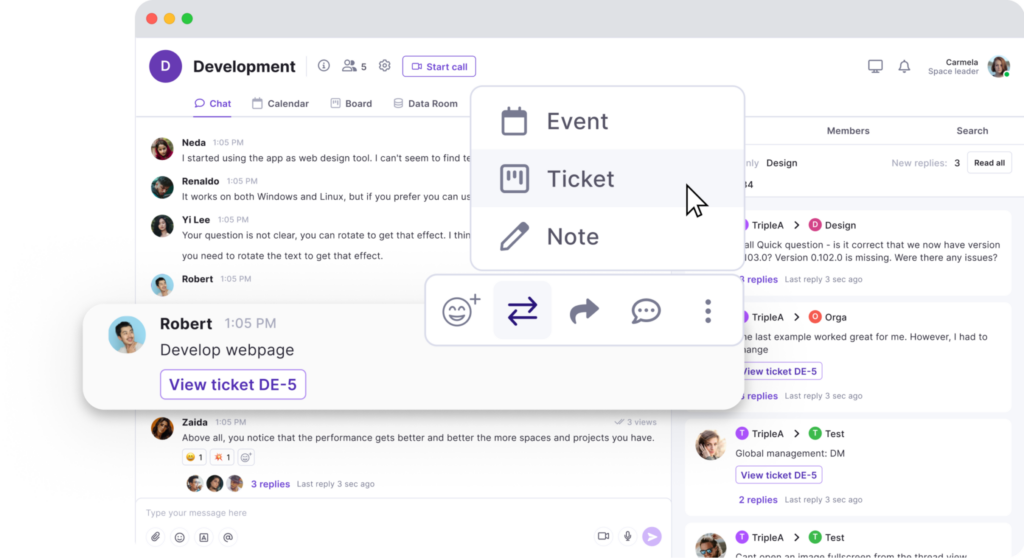
Chat
- Instant Messaging: Collaborate effortlessly with team members and clients through real-time chat. Exchange messages, share files, and maintain threaded conversations for organized discussions.
- Project-Specific Spaces: Create dedicated spaces for each project, ensuring that all relevant discussions and files are easily accessible to team members involved.
- Direct Messages: Communicate privately with colleagues, facilitating focused one-on-one conversations without the distraction of group chats.

Video Calls
- Built-In Video Conferencing: Host efficient meetings and collaborative sessions with integrated video call functionality. Support both scheduled and impromptu video calls to keep teams connected.
- Screen Sharing: Enhance presentations, demonstrations, and collaborative work by sharing your screen during video calls.
- Recording Capability: Record video calls for future reference, allowing team members to revisit discussions and decisions.
Screen Record
- Easy Recording: Capture your screen activity effortlessly, creating tutorials, walkthroughs, or documenting issues for support.
- Integrated Upload: Upload recordings directly to chats, tickets, and the Data Room for seamless sharing and accessibility.
- Enhance Communication: Use screen recordings to convey complex information more clearly, reducing misunderstandings and improving collaboration.
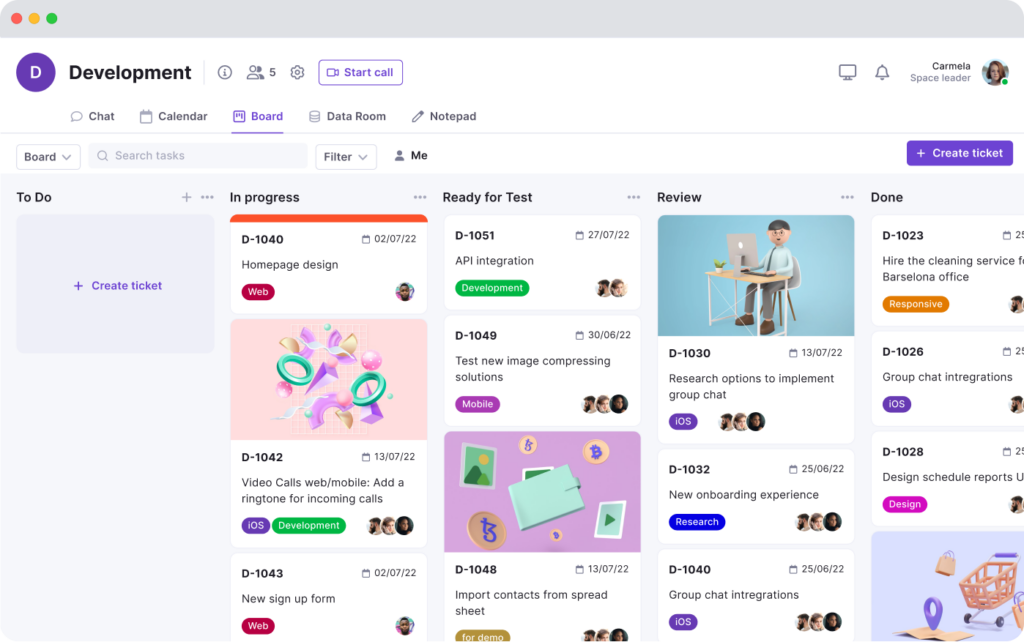
Kanban Boards
- Customizable Boards: Organize workflows with Kanban boards tailored to your team’s specific processes. Create, assign, and track tasks with ease.
- Multiple Views: Switch between backlog, Kanban, and board views to manage tasks and visualize progress from different perspectives.
- Advanced Task Management: Utilize epics and sprints to manage larger projects and iterative workflows, ensuring tasks are completed efficiently.
Calendar
- Centralized Scheduling: Manage meetings, deadlines, and events with Teamplate’s integrated calendar. Keep track of important dates and avoid scheduling conflicts.
- Reminder Notifications: Set reminders for key events and deadlines to stay on top of your schedule.
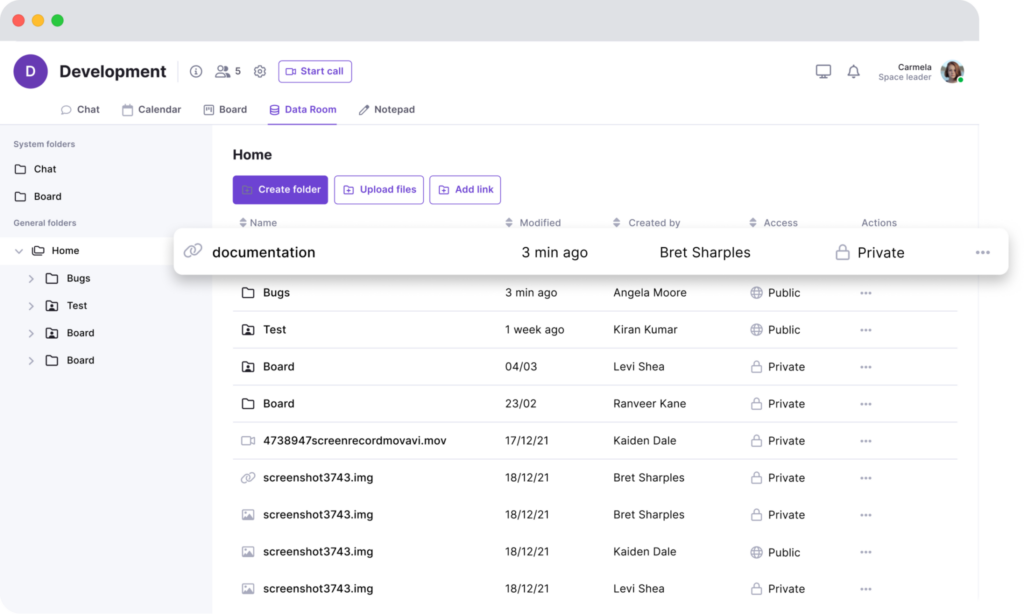
Data Room
- Secure Storage: Store files securely in the Data Room, supporting various formats, including Excel, Word, PDF, and images.
- Access Control: Set permissions for each file, ensuring only authorized team members can access sensitive information.
- Easy Sharing: Share files within chats, tickets, and projects, ensuring that relevant documents are always at your fingertips.
Wiki & Notes
- Collaborative Documentation: Use the Wiki feature to create and share documentation, meeting notes, and ideas with your team. Organize information in a structured, easily accessible format.
- Personal Notes: Keep track of your thoughts, tasks, and ideas with the Notes feature. These personal notes are only visible to you and can be used for any purpose.
Dashboard
- Central Hub: Manage your events, tasks, and more from a dedicated dashboard. This centralized space provides an overview of your activities and helps you stay organized.
- Real-Time Updates: Stay informed with real-time updates on tasks, deadlines, and project progress, ensuring you’re always up to date.
General Features
- All-in-one Platform: Eliminate the need for multiple tools and integrations with Teamplate’s comprehensive suite of features.
- Simple & Intuitive: Designed for ease of use, Teamplate minimizes the need for extensive training and onboarding.
- Affordable & Accessible: The freemium model ensures all features are accessible without significant financial investment.
ClickUp
ClickUp is a versatile project management tool that targets a wide range of users, from individuals to large enterprises. Known for its flexibility and comprehensive feature set, ClickUp aims to replace multiple tools by providing an all-in-one solution for task and time management, collaboration, and productivity enhancement.
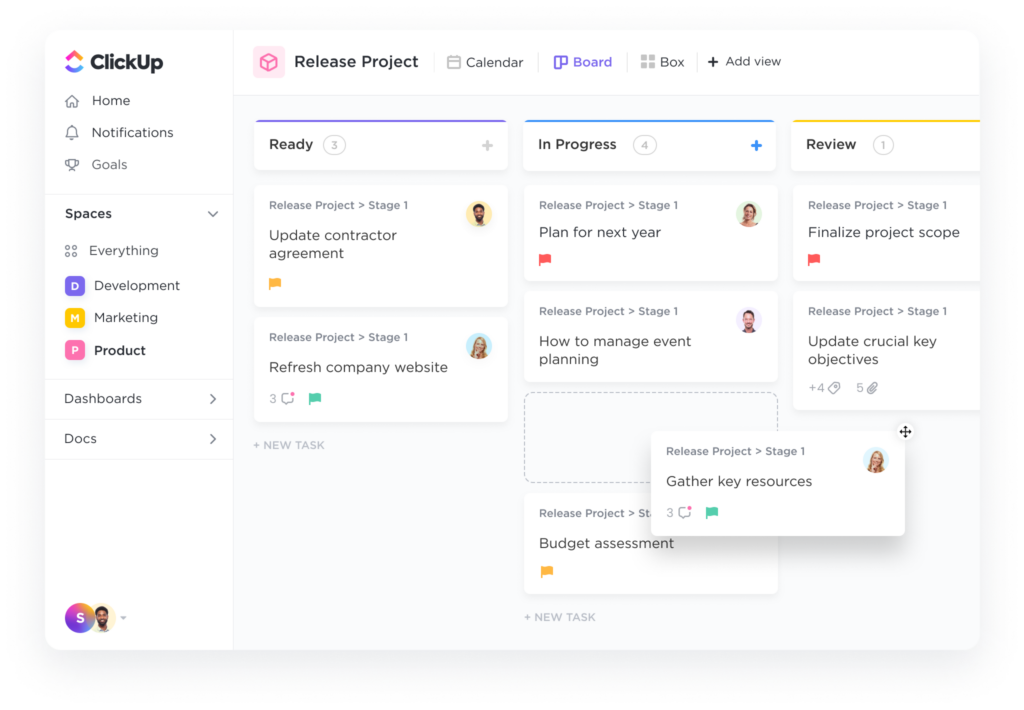
Key Features
- Task and Time Management: ClickUp offers detailed task management capabilities, including to-do lists, task dependencies, time tracking, and reminders.
- Custom Views and Dashboards: Users can customize views and dashboards to suit their workflow, including list, board, calendar, and Gantt chart views.
- Integration with Other Tools: ClickUp integrates with a variety of third-party tools, such as Slack, Google Drive, and Trello, ensuring a seamless workflow.
- Collaboration and Communication Features: The platform supports real-time collaboration through comments, mentions, and document sharing.
Pros and Cons
- Pros: ClickUp’s flexibility, extensive feature set, and ability to replace multiple tools are major strengths. The platform’s customization options are particularly appreciated by users.
- Cons: The wide range of features can be overwhelming for new users, and the learning curve might be steep for some teams.
Trello
Trello is a popular project management tool known for its simplicity and intuitive Kanban board system. Ideal for smaller teams and individual users, Trello offers a visual approach to task management that is easy to adopt and use.
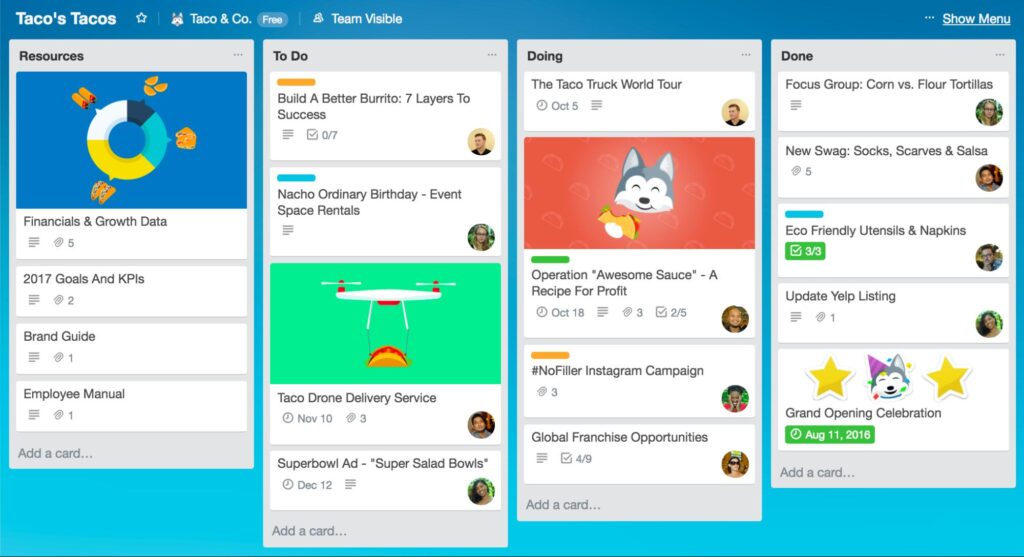
Key Features
- Kanban Boards and Card System: Trello’s Kanban boards allow users to organize tasks using cards that can be moved between columns representing different stages of a project.
- Power-Ups and Integrations: Users can enhance Trello’s functionality with Power-Ups, which integrate with tools like Slack, Google Drive, and Evernote.
- Mobile and Desktop Accessibility: Trello’s mobile and desktop apps ensure that users can manage their tasks on the go.
- Team Collaboration Tools: Trello supports team collaboration through comments, attachments, and mentions on task cards.
Pros and Cons
- Pros: Trello’s visual and intuitive interface makes it easy to use and adopt. Its flexibility and integration options are also highly valued by users.
- Cons: Trello’s simplicity can be a limitation for more complex project management needs, and its free version has limited features compared to some competitors.
Monday.com
Monday.com is a highly customizable work operating system designed to help teams manage projects and workflows efficiently. With a focus on visual project management and automation, Monday.com aims to streamline processes and improve team collaboration.
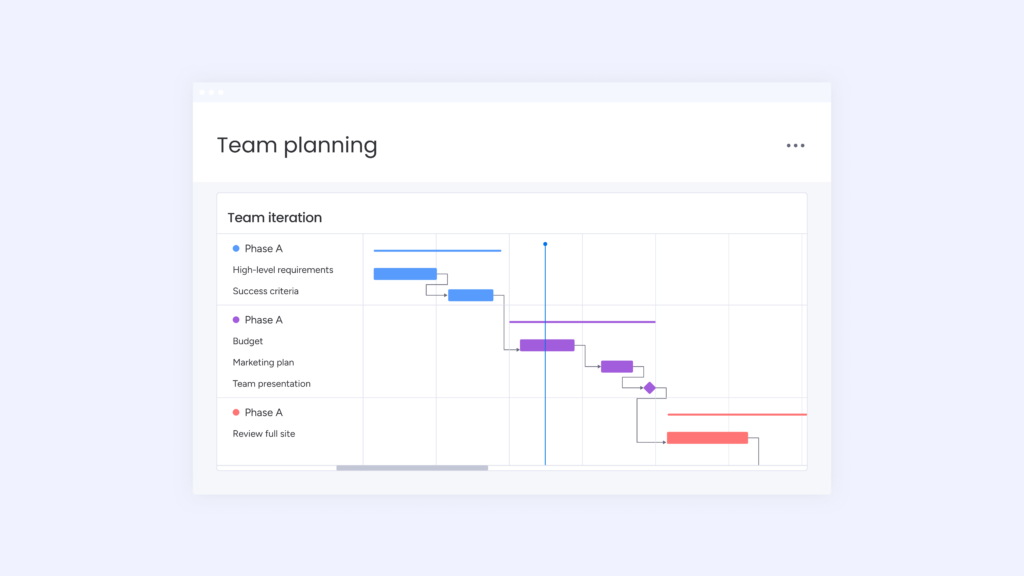
Key Features
- Workflows and Automation: Monday.com allows users to create custom workflows and automate repetitive tasks, enhancing efficiency.
- Customizable Templates and Views: Users can choose from a variety of templates and customize views to suit their project needs, including Kanban, Gantt, and timeline views.
- Time Tracking and Project Timelines: The platform includes time tracking and project timeline features to help teams stay on schedule.
- Communication and Collaboration Tools: Monday.com supports team collaboration through updates, mentions, and file sharing.
Pros and Cons
- Pros: Monday.com’s customization options, automation features, and visual project management tools are highly praised by users. Its ability to adapt to different workflows makes it a versatile solution.
- Cons: Some users find the pricing of advanced features to be a limitation, and the initial setup can be time-consuming for complex projects.
Basecamp
Basecamp is a project management and team collaboration tool that focuses on simplicity and ease of use. Designed to replace multiple tools with one platform, Basecamp aims to streamline project management and improve team communication.
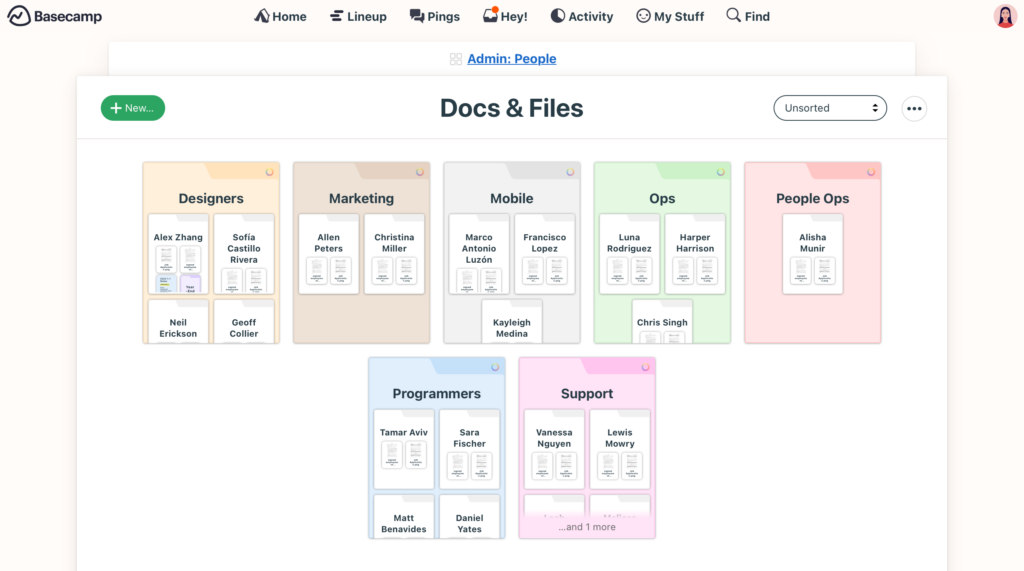
Key Features
- To-Do Lists and Scheduling: Basecamp’s to-do lists and scheduling features help users manage tasks and deadlines effectively.
- Document and File Storage: The platform provides secure storage for documents and files, with options for sharing and collaboration.
- Group Chat and Message Boards: Basecamp supports team communication through group chat and message boards, enabling real-time and asynchronous collaboration.
- Client Access and Project Transparency: Clients can be invited to view project progress and contribute to discussions, enhancing transparency and collaboration.
Pros and Cons
- Pros: Basecamp’s simplicity, ease of use, and focus on team collaboration are major strengths. Its client access feature is particularly useful for project transparency.
- Cons: The platform’s simplicity can be a limitation for more complex project management needs, and some users may find its feature set less comprehensive than competitors.
How Free Software Fits into the Product Management Process
Initial Setup and Configuration
Free software typically offers an easy setup process, allowing teams to get started quickly without significant upfront investment. Basic features and tools available in free versions are often sufficient for small to medium-sized projects, providing a solid foundation for managing tasks, schedules, and communication.
Day-to-Day Management
Free product management software enables efficient day-to-day management by providing essential tools for task tracking, collaboration, and communication. Teams can manage tasks, share documents, and communicate in real-time, ensuring that projects stay on track and everyone is aligned.
Scaling Up
As teams and projects grow, the limitations of free software may become apparent. While free versions are great for small projects and teams, larger projects may require more advanced features and greater scalability. Free software often provides a good starting point, with the option to upgrade to paid plans as needed.
When to Consider Paid Options
Feature Limitations
While free software offers a range of useful features, advanced functionalities such as detailed reporting, advanced automation, and extensive integrations are typically reserved for paid plans. Teams with complex project management needs may find these limitations restrictive and should consider upgrading.
Team and Project Size
Free versions are often designed for small to medium-sized teams. As the team size grows and projects become more complex, the need for additional features and enhanced performance may necessitate a move to paid options.
Support and Customization
Paid plans often come with enhanced support options, including priority support, dedicated account managers, and customization services. Teams that require personalized support and tailored solutions may find value in upgrading to a paid plan.
Cost-Benefit Analysis
Evaluating the return on investment for upgrading is crucial. While free software is cost-effective, the productivity gains, advanced features, and enhanced support offered by paid plans can justify the additional expense, particularly for larger teams and more complex projects.
Conclusion
The top five free product management software options—Teamplate, ClickUp, Trello, Monday.com, and Basecamp—each provide unique features and benefits that can greatly enhance project management efficiency. By understanding the individual strengths and limitations of these tools, teams can select the best option to fit their specific needs and workflow requirements.
When choosing a product management tool, it’s crucial to consider factors such as team size, project complexity, necessary features, and budget. Evaluating how each tool aligns with your particular workflow and business requirements will help ensure that you select the most appropriate software to drive your projects forward successfully.
Looking Ahead to 2024
The landscape of product management software is set to evolve with several emerging trends:
- AI-Driven Automation: There will be a greater emphasis on AI-driven automation, which will help streamline processes and reduce manual workload.
- Enhanced Integration Capabilities: Improved integration capabilities will allow for more seamless workflows across different platforms and tools.
- Improved User Experience: Enhanced user experience will remain a priority, ensuring that these tools are not only powerful but also easy to use.
Staying informed about these trends will enable teams to leverage the latest advancements, maintaining a competitive edge and maximizing efficiency.
Why Consider Teamplate?
While all five tools offer valuable features, Teamplate stands out with its user-friendly, all-in-one collaboration capabilities designed specifically for smaller teams and startups. By integrating chat, video calls, Kanban boards, and more into one cohesive platform, Teamplate reduces the need for multiple subscriptions and simplifies the project management process.

